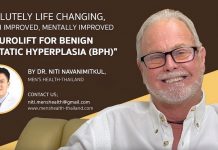The World Health Organization (WHO) released a damning report last month. Their report covered antibacterial agents in clinical development – an analysis of the antibacterial clinical development pipeline, including tuberculosis, was launched by WHO showing a serious lack of new antibiotics under development to combat the growing threat of antimicrobial resistance.
To be frank, I have not always agreed with the WHO, over-reacting with Bird Flu, for example, but this latest report does foretell future clinical problems.
Most of the drugs currently in the clinical pipeline are modifications of existing classes of antibiotics and are only short-term solutions. The report found very few potential treatment options for those antibiotic-resistant infections identified by WHO as posing the greatest threat to health, including drug-resistant tuberculosis which kills around 250 000 people each year.
“Antimicrobial resistance is a global health emergency that will seriously jeopardize progress in modern medicine,” says Dr Tedros Adhanom Ghebreyesus, Director-General of WHO. “There is an urgent need for more investment in research and development for antibiotic-resistant infections including TB, otherwise we will be forced back to a time when people feared common infections and risked their lives from minor surgery.”
In addition to multidrug-resistant tuberculosis, WHO has identified 12 classes of priority pathogens – some of them causing common infections such as pneumonia or urinary tract infections – that are increasingly resistant to existing antibiotics and urgently in need of new treatments.
The report identifies 51 new antibiotics and biologicals in clinical development to treat priority antibiotic-resistant pathogens, as well as tuberculosis and the sometimes deadly diarrhoeal infection Clostridium difficile.
Among all these candidate medicines, however, only 8 are classed by WHO as innovative treatments that will add value to the current antibiotic treatment arsenal.
There is a serious lack of treatment options for multidrug- and extensively drug-resistant M. tuberculosis and gram-negative pathogens, including Acinetobacter and Enterobacteriaceae (such as Klebsiella and E.coli) which can cause severe and often deadly infections that pose a particular threat in hospitals and nursing homes.
There are also very few oral antibiotics in the pipeline, yet these are essential formulations for treating infections outside hospitals or in resource-limited settings.
“Pharmaceutical companies and researchers must urgently focus on new antibiotics against certain types of extremely serious infections that can kill patients in a matter of days because we have no line of defense,” says Dr Suzanne Hill, Director of the Department of Essential Medicines at WHO.
To counter this threat, WHO and the Drugs for Neglected Diseases Initiative (DNDi) set up the Global Antibiotic Research and Development Partnership (known as GARDP). On 4 September 2017, Germany, Luxembourg, the Netherlands, South Africa, Switzerland and the United Kingdom of Great Britain and Northern Ireland and the Wellcome Trust pledged more than €56 million for this work. (But that is only 10 million euro each.)
“Research for tuberculosis is seriously underfunded, with only two new antibiotics for treatment of drug-resistant tuberculosis having reached the market in over 70 years,” says Dr Mario Raviglione, Director of the WHO Global Tuberculosis Programme. “If we are to end tuberculosis, more than US$ 800 million per year is urgently needed to fund research for new antituberculosis medicines.”
New treatments alone, however, will not be sufficient to combat the threat of antimicrobial resistance. WHO works with countries and partners to improve infection prevention and control and to foster appropriate use of existing and future antibiotics. WHO is also developing guidance for the responsible use of antibiotics in the human, animal and agricultural sectors.
So how did the antibiotic group begin to lose its power over simple infections? What you have to understand is that antibiotics are not ‘new’. Penicillin was discovered in 1928, the first true antibiotic, by Sir Alexander Fleming, Professor of Bacteriology at St. Mary’s Hospital in London. But at that time its future relevance was not known. The first Sulfa drugs (M&B 693) was one of the early generation of sulphonamide antibiotics developed in 1938.
Once it was seen that these compounds killed bugs they became overused, and the bugs began to develop an immunity. Public demand increased so even more antibiotics were used, including now over the counter in many countries. WHO is just showing the problem, but not the answer, I’m afraid.




